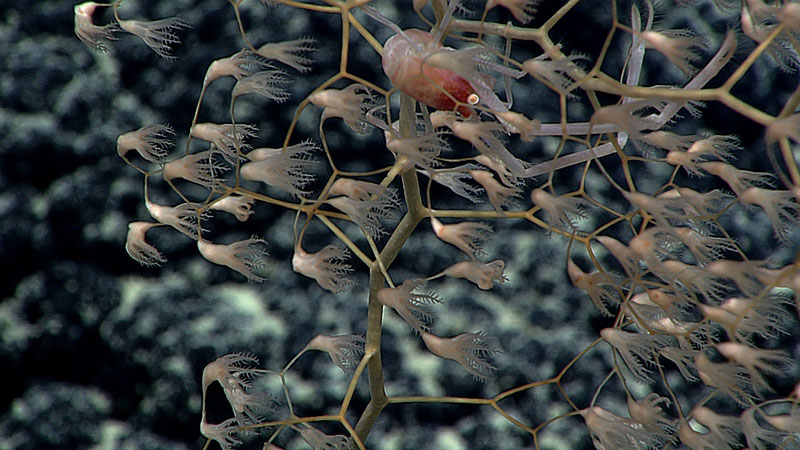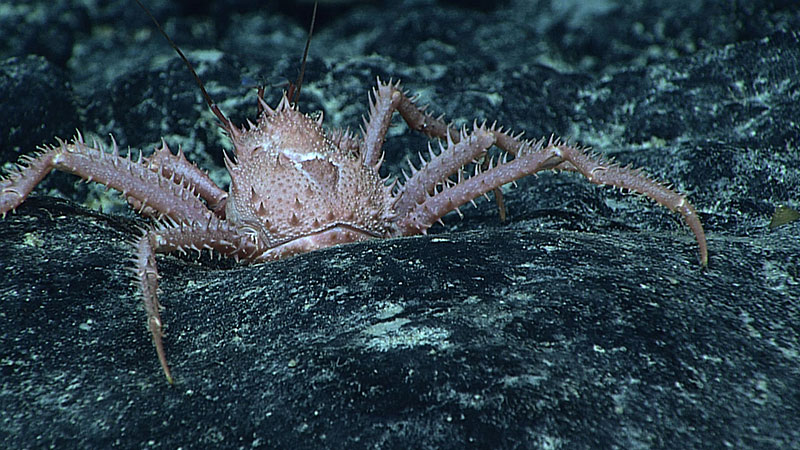
By Mary K. Wicksten, Texas A&M University
February 28, 2016

This squat lobster hangs on tightly to its soft coral despite the current. Image courtesy of the NOAA Office of Ocean Exploration and Research, Hohonu Moana 2016. Download larger version (1.3 MB).
Coral reefs of shallow tropical seas are rich in biodiversity. A single coral head may house as many as 10 or more species of tiny crabs and shrimps; a big sponge may serve as an apartment complex for brittle stars, small shrimps, and tiny fishes. But what happens in the cold, dark depths of the sea?
Much of what is known about deep-sea crabs, shrimps, and lobsters is based on extensive expeditions of the British ship Challenger and the American ship Albatross between 1880-1914. These ships only could collect specimens in large nets (trawls) dragged across the seafloor. Scientists named and described these species based on dead, faded, and often broken specimens.

A shrimp and a squat lobster share the same soft coral host. Image courtesy of the NOAA Office of Ocean Exploration and Research, Hohonu Moana 2016. Download larger version (1.7 MB).
With remotely operated vehicles, one can see what deep-sea animals are doing and with what they live. We now can see that certain squat lobsters (family Chirostylidae, pronounced Ki-ro-STYLE-i-dee) and the long-claw shrimps (family Bathypalaemonellidae, Bath-ee-pale-ee-mon-ELL-i-dee) always live among certain families of soft corals. Cold-water spiny shrimps (family Thoridae, THOR-i-dee) may live among sponges or soft corals.
But how do these shrimps or squat lobsters locate their hosts? Do they stay there? Do they coexist with each other, fishes, or brittle stars? Do they harm the host or protect it from predators?

The purple squat lobster has stalked barnacles attached to it. Image courtesy of the NOAA Office of Ocean Exploration and Research, Hohonu Moana 2016. Download larger version (jpg, 241 KB).

The unknown thorn-studded king crab marches across the seafloor. Image courtesy of the NOAA Office of Ocean Exploration and Research, Hohonu Moana 2016. Download larger version (jpg, 1.5 MB).
And let’s not forget that species new to science show up all the time. I’m waiting for new specimens of two odd ones: a purple spiny squat lobster and a thorn-studded king crab.